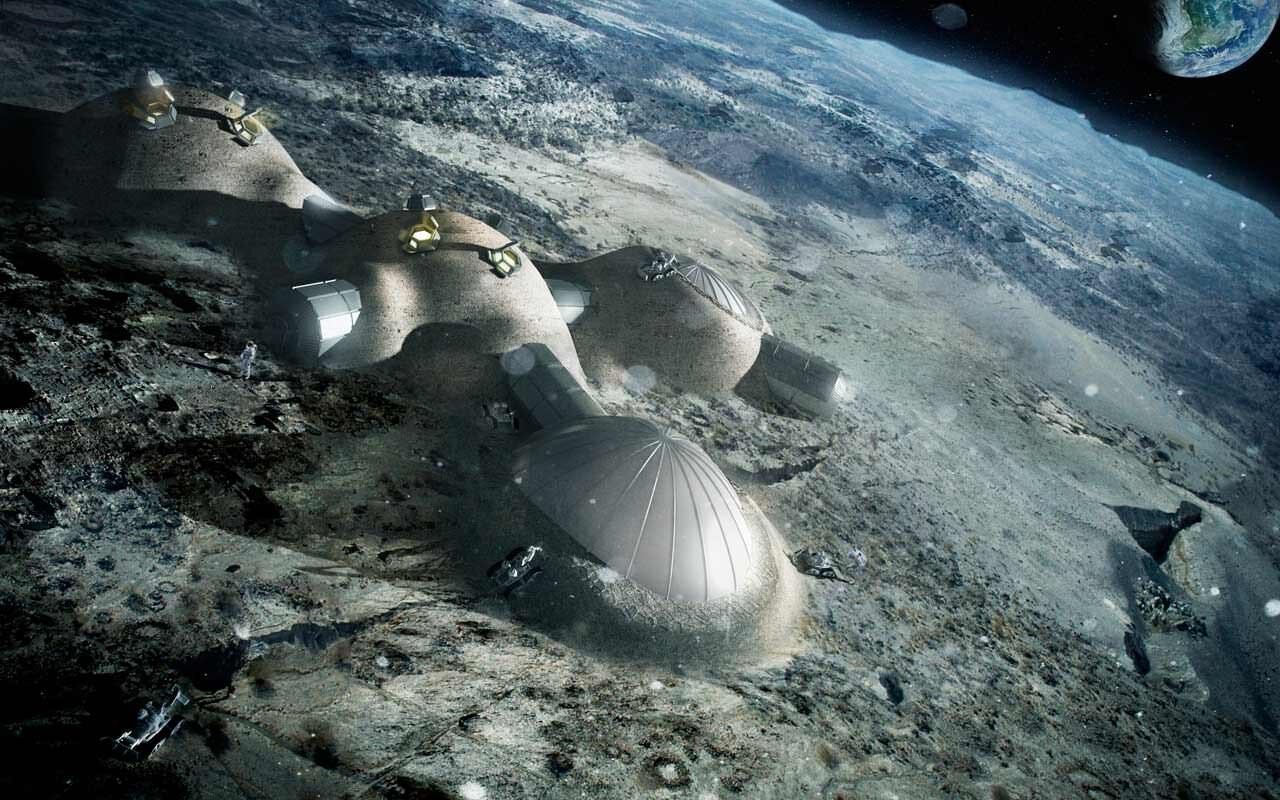In order to survive on the Moon, where temperature variations are 250°C, it is necessary to maintain a constant temperature inside the station. This is proposed to be done with the help of phase change materials. They are able to absorb a large amount of energy and then give it back when it gets colder.

Necessity to stabilize room temperature
In space, where there is no atmosphere with its huge heat capacity, objects can heat up and cool down very quickly. For example, temperatures on the Moon can range from 121 °C during a lunar “day” (which lasts two weeks) and then drop to -133 °C at night, covering variations of 250 °C.
Stabilizing the temperature within the habitat under such conditions would require heating and cooling on a scale that has never been done before on Earth. But what if there was a way to ease the burden of such temperature fluctuations? Phase-change materials may be the answer, according to researchers from the Polytechnic University of Madrid, published in the journal Thermo.
Phase change materials, i.e. materials that transform from solid to liquid state during heat absorption, have been known for a long time and are currently used in several industries, including batteries, solar power plants, heat pumps and even spacecraft. Perhaps most interestingly, they are used to cool and heat the interiors of buildings on Earth.
How do phase-change materials function?
Phase-change materials absorb heat during hot periods of the day (day or season) and radiate it during cooler periods of a later period. They act as a giant thermal “accumulator”, making heating or cooling last longer, and they also provide insulation for everything around them.
Another way to visualize this is through the concept of thermal inertia. When an object, such as a building, is in the Sun, it is directly exposed to the sun’s rays, causing it to heat up. On the other hand, if an object is no longer in the Sun, but still contains a lot of heat energy, it will begin to radiate some of that heat. In vacuum cleaners, radiant energy is transmitted through infrared light, like in space.
Phase change materials have such a large thermal inertia because they either absorb or radiate a lot of energy during phase transitions, such as between solid and liquid or liquid and gas. It is much more difficult to change the temperature in objects built with such materials, and this challenge may make it easier to regulate the temperature within space habitats. Researchers modeled what would happen if they built space housing out of materials going through phase change and found a significant reduction in the heating and cooling required to maintain a comfortable temperature range for humans.
Other factors such as the reflectivity of the exterior wall surface and the portion of the solar cycle experienced by the sun were also included in the calculation. However, the authors found that under optimal conditions, designers can completely passively heat and cool a space habitat using only Phase Change Materials.
Prospects for the application of phase change materials in space
This is quite an impressive achievement, although optimal conditions are unlikely to ever be achieved in practice. However, any energy savings that materials can provide will be appreciated in a habitat that is likely to be energy starved when it starts. However, there are many different ideas on how such habitats should be built, including using regolith on the Moon.
It is unclear how possible it is to incorporate new materials into cave walls or other structures made of local materials. Starting the huge number of composites needed to thermoregulate a huge human habitation may also be too expensive at current prices.
However, materials continue to be improved and there are clear benefits to using these materials in this context. Although they may not be integrated into some of the early habitats that humanity builds in space, they will certainly be used in future ones, and this paper is one step towards that.
According to phys.org


